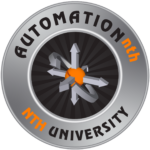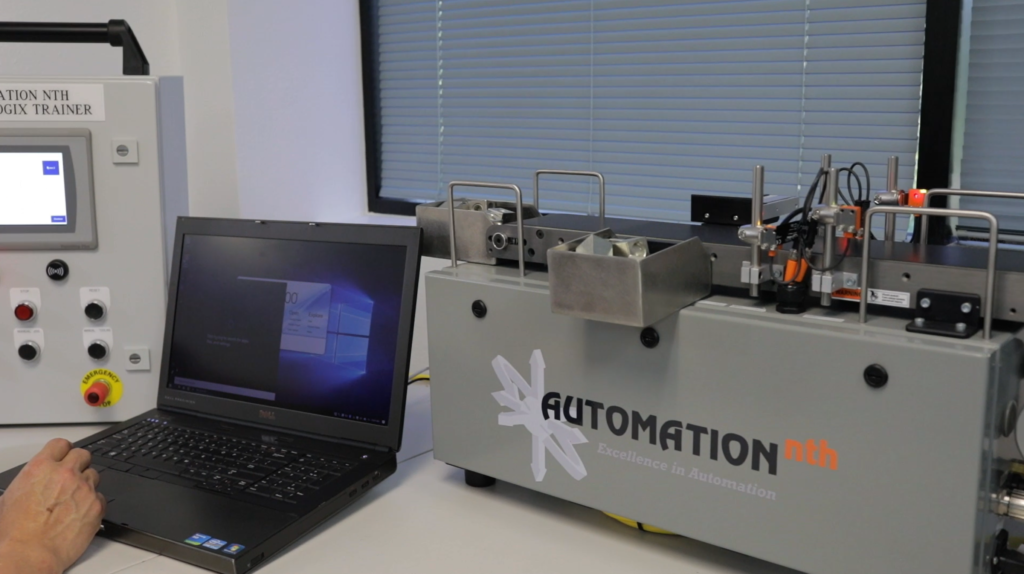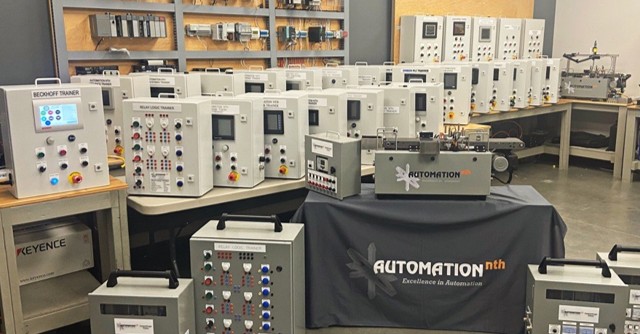
Frequently training will just come in the form of “learning by osmosis” through shadowing experienced engineers on projects. This approach results in highly varied skill development because the learning is greatly shaped by the specific project they’re working on and the senior engineer they are paired with.
A number of years ago, we decided that we needed something better than the “learning by osmosis” approach. We wanted our engineers to develop more quickly, and also ensure a consistent baseline of automation engineering skills among our staff. For this reason, we developed a program called “NTH University” to accelerate and standardize engineering training.
Many of our full-time engineers started with us through our NTH University internship program, where interns rotate through hands-on training including PLC and HMI programming, controls design, and panel fabrication. The internship culminates with a project where the intern designs and builds a training box from scratch and then programs it to run a sorting application on a small conveyor.

NTH University coursework also includes topics such as machine safety, pneumatics, system startup, ethernet/IP networking, vision systems, and robotics. New hires straight from school start their full-time work by completing more self-guided courses, and engineers who finish this program earn what we consider to be a “Masters in Automation.” NTH University courses also help experienced hires fill in knowledge gaps.
We estimate that engineers who complete our internship program and continue with more advanced NTH University courses develop at 2x-3x the rate at which they would with the traditional “learning by osmosis” approach. This enables us to give our new hires substantial responsibilities on big, complex projects within their first year of full-time work.

